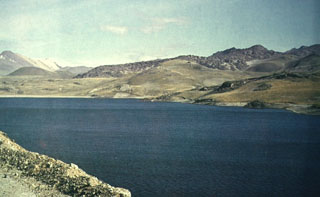Report on Laguna del Maule (Chile) — 4 November-10 November 2020
Smithsonian Institution / US Geological Survey
Weekly Volcanic Activity Report, 4 November-10 November 2020
Managing Editor: Sally Sennert.
Please cite this report as:
Global Volcanism Program, 2020. Report on Laguna del Maule (Chile) (Sennert, S, ed.). Weekly Volcanic Activity Report, 4 November-10 November 2020. Smithsonian Institution and US Geological Survey.
Laguna del Maule
Chile
36.058°S, 70.492°W; summit elev. 2162 m
All times are local (unless otherwise noted)
SERNAGEOMIN reported that 10 low-magnitude volcano-tectonic earthquakes were detected at the Laguna del Maule Volcanic Complex during 16-31 October; seismicity was low in the region where a swarm had occurred in June. Satellite data showed no deformation, surface changes, gas emissions, or thermal anomalies. On 6 November the Alert Level was lowered to Green, the lowest level on a four-color scale. ONEMI cancelled the Yellow Alert for San Clemente, but declared a “Preventive Early Warning” ensuring continued surveillance of the area and coordination within the Civil Protection System.
Geological Summary. The Laguna del Maule volcanic complex includes a 15 x 25 km caldera with a cluster of small stratovolcanoes, lava domes, and pyroclastic cones of Pleistocene-to-Holocene age. The caldera lies mostly on the Chilean side of the border, but partially extends into Argentina. Fourteen Pleistocene basaltic lava flows were erupted down the upper part of the Maule river valley. A cluster of Pleistocene cinder cones was constructed on the NW side of Maule lake in the northern part of the caldera. The latest activity produced an explosion crater on the E side of the lake and a series of Holocene rhyolitic lava domes and blocky lava flows that surround it.
Sources: Servicio Nacional de Geología y Minería (SERNAGEOMIN), Oficina Nacional de Emergencia-Ministerio del Interior (ONEMI)

